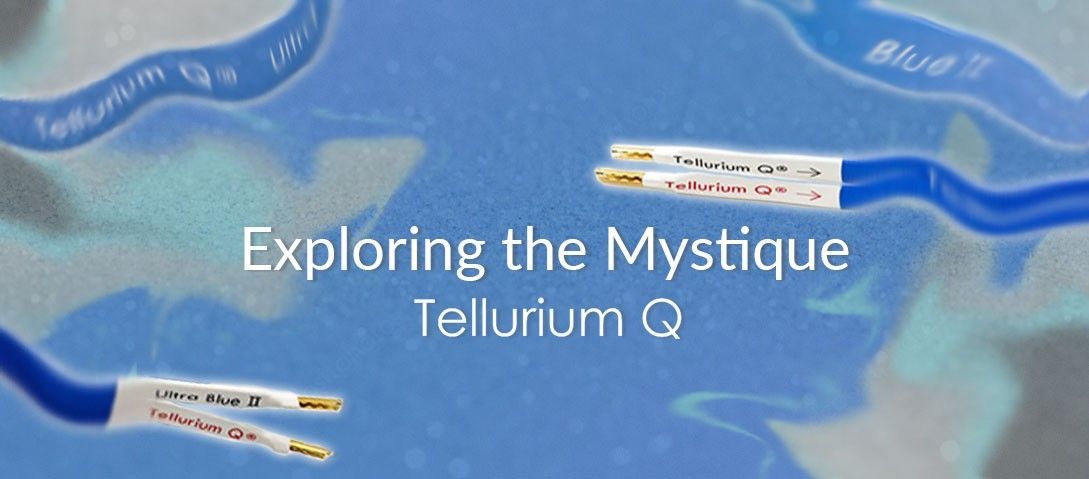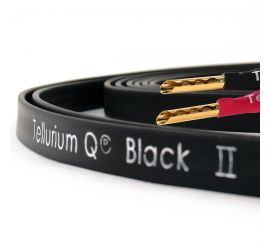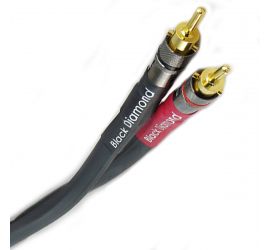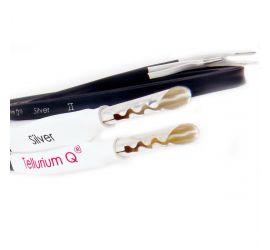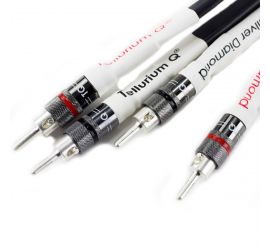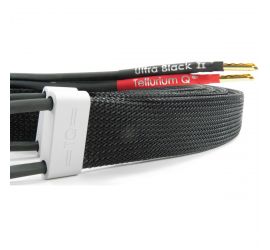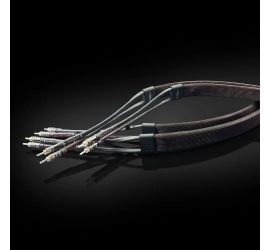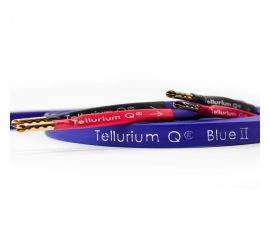Introduction: Unravelling the Enigma of Tellurium Q
Tellurium Q is another of those hi-fi companies we know less about than what goes on at a Freemason's tea party. It is tempting to slice open thirteen hundred pounds worth of premium quality speaker wire and spill its secret (strands of mermaid's hair, maybe?). What we do know, after hours of enjoyable listening, is that it isn't snake oil.
Actually, It's refreshing being unburdened with all the tech specs for a change – it makes our job easier. When our customers ask: "What's so special about these Tellurium Q cables?" we can confidently proclaim: "I don't know!". Well, almost. We have a duty to back up our merchandise, so all we had to do was listen.
Decoding the Tellurium Q Range: Colours and Performance Levels
But before letting you in on our findings, it's best to understand how TQ range their cables. They come in three colour families: Blue, Black, and Silver (which overlap in price points), and there are three performance levels: Standard Colour, Ultra and Diamond.
Families of Sound: Characterising the Colour Ranges
The colour families present their cables in three flavours:
Blue is warm and cuddly – it takes the edge off, and TQ aim it at harder-sounding AV systems.
Black is spacious and sprightly – an easy-to-love all-rounder.
Silver is lively and clear – a detailed but coherent cable aimed at well-balanced systems.
Climbing up the three colour ranges, you can expect more of the same characteristics but to a greater degree. In other words, Silver Diamond sounds like Ultra Silver after a protein shake and a workout.

In-Depth Testing: The Tellurium Q Experience
Mark from Kog Audio – TQ's distributor – dropped by with a quiver of cables to showcase. The full range of Black and Silver cables were put through their paces with the help of Billie Eilish and her Ocean Eyes – an insightful and intense poem (sung when just 14 years old) with plenty of space, low-end and ethereal voices, befitting Tellurium Q's mythos.
Starting on Black II, Billie's vocal layers sounded clear and glossy but, most strikingly, with impressive separation. Comparing Silver II brought us a silkier, smoother and more cohesive presentation with deeper perceived bass.
Ascending to Audio Excellence: From Ultra to Diamond
Up to the Ultra cables, Ultra Black II got more spacious – space that revealed more of the music's dynamics – with more forgiving tops and a good dash of transient detail on Billie's vocal articulations. The Ultra Silver was excitingly vibrant amid its cohesion, thickening the sound compared to its sibling.
Then we sailed up to the Diamonds. The Black Diamond's top-end presentation on set led into a sumptuous smoothness, remaining super-clear and tightly nuanced. Silver Diamond became even more vibrant with a rich, cohesive midrange and three-dimensional depth. It may have been Billie's Ocean Eyes, but we began to believe mermaid hair was hidden beneath the deceptively plain outer jacket.
Dare we hear the set of Statement speaker cables Mark flashed us before wrapping up the session? Of course, we should (despite their price tag competing with the cost of our B&W 800 series speakers). Statement II combined the best of Black and Silver's qualities. It possessed the vibrant yet cohesive character of Silver and the scale and space of Black with that silky-smooth top-end and highly nuanced transient response. However, we suspect this cable is capable of much more than our system can reveal.
The Tellurium Q Secret Sauce: A Technical Insight
The lengths Tellurium Q have gone to conceal their secrets are a little bit extra. Let me give you examples . . . On their power cables, the mains plugs are glued together. If you need a fuse change, only TQ can handle this. The RCA plugs on the interconnects are filled with a mysterious goo which hides its connections. And, on the speaker cables, the banana plugs have a locking bar to stop you from snooping around inside those. An analytical examination was our best approach to understanding what goes into TQ's speaker cables.
The standard colour ranges are simply strands of conductors encased in polymer material with a flat geometry. The gap between the positive and negative will be spaced relative to the conductor gauge – this controls the balance between inductance and capacitance (length dependent), thereby tuning the cables' sound. The Ultra range increases the conductor gauge and the gap between them, accordingly. The Diamond range appears to be a twisted pair of conductors. We know Blue uses copper, and Black and Silver are likely to be silver-plated or – more likely – silver alloy.
Conclusion: Matching Your System to the Perfect Tellurium Q Cable
Ultimately, your choice should be based on the character of the cable rather than the relative price point. It may be that you prefer the presentation of the Black over the tonal capability of the dearer-priced Silver. Which level of cables you go with would depend on the level of your system. Our technical advisors are happy to advise.
Epilogue: The Myth Continues
By the end of our demonstration session, we still had so much to ask Tellurium Q's messenger from the West. But before we could ask any more prying questions on how many strands of mermaid hair run through Silver Diamond, Mark swept up the mythical merchandise, mounted a winged horse and fled back to the Kingdom of Tellurium to play the lyre.

